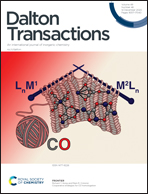A high-performance tin phosphide/carbon composite anode for lithium-ion batteries†
Abstract
Tin phosphide (SnxPy) is considered as an alternative anode material for lithium-ion batteries (LIBs) due to its high theoretical lithium-storage ability. Herein, carbon-coated SnP/C and Sn4P3/C composites are obtained via a facile solid-phase method for the first time. Subsequently, the lithium storage performances of SnP/C and Sn4P3/C are investigated in coin-cells, demonstrating a significantly high lithiation capacity and outstanding stability due to the introduction of carbon. Typically, the SnP/C anode delivers a very high specific capacity up to 751 mA h g−1 at 0.1 A g−1 and a specific capacity of 610 mA h g−1 with a long cycling life of 500 cycles at a current density of 1.0 A g−1, while the Sn4P3/C anode yields 727 mA h g−1 at 0.2 A g−1 after 100 cycles. The specific capacities achieved here are remarkably higher than those of any other tin phosphide materials reported in previous studies. Moreover, the stability and cycling performance of these materials are significantly better in comparison with the previous studies, manifesting the best lithium-storage capacity performance of the SnxPy anode to date.



 Please wait while we load your content...
Please wait while we load your content...